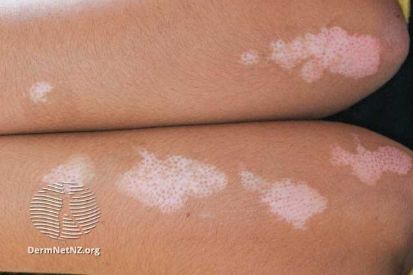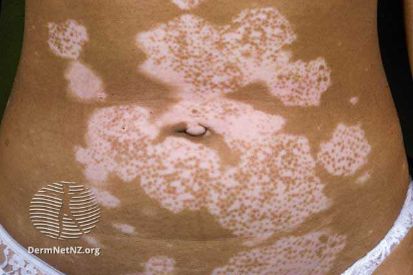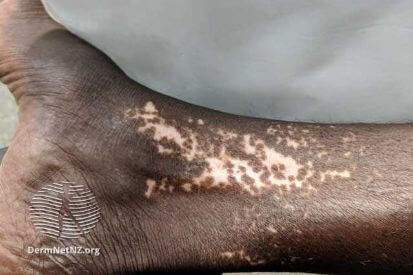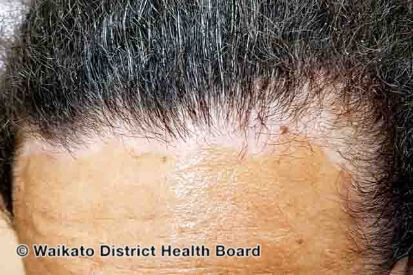Vitiligio
Our dermatologists approach vitiligo treatment with various methods tailored to your individual needs. While there's no definitive cure, treatments aim to manage the condition and improve skin appearance. With a proper skin consultation, we can work with you to determine the best outcome for your skin condition. Schedule a skin consultation to begin your healthy skin journey with Brentwood Dermatology.
Examples of Vitiligio





What are the Symptoms of Vitiligo?
- Patches of lighter-colored or white skin appearing any place on the body.
- Some people with vitiligo develop a few patches, while others are affected in large parts of the skin area.The edges of the patches are well-defined, but irregular.
- There are generally not any other symptoms of the condition, and people affected otherwise feel completely healthy.
What Causes Vitiligo?
- Vitiligo is believed to result from a combination of genetic, autoimmune, and environmental factors.
- It occurs when the immune system mistakenly attacks and destroys melanocytes, the cells responsible for producing skin pigment.
- Genetic factors may contribute to an individual's susceptibility to vitiligo, and certain environmental triggers.
Can You Prevent Vitiligo?
Vitiligo FAQs
Vitiligo can occur anywhere on the body. However, it often develops in areas exposed to the sun, such as the face, hands, arms, and feet.
Vitiligo can impact self-esteem, but there are treatment options available. Dermatologists may recommend topical steroids, phototherapy, or other therapies to help repigment the skin.
While there is no cure for vitiligo, various treatments aim to improve skin appearance. Dermatologists may tailor treatment plans based on individual needs, and supportive therapies can help manage the condition.
Vitiligo may spread over time, and its progression can vary from person to person. Dermatologists diagnose vitiligo through a physical examination and may use additional tests to assess the extent of depigmentation.
Sun exposure can potentially worsen vitiligo. Dermatologists often recommend protecting the skin from the sun using sunscreen and clothing to prevent sunburn in depigmented areas.
Treatments for Vitiligo
Our team of skin experts can help you achieve your healthy skin goals. Schedule your appointment today to start your skin journey.
Featured Products
Check your local office for current stock!
Check your local office for current stock!
